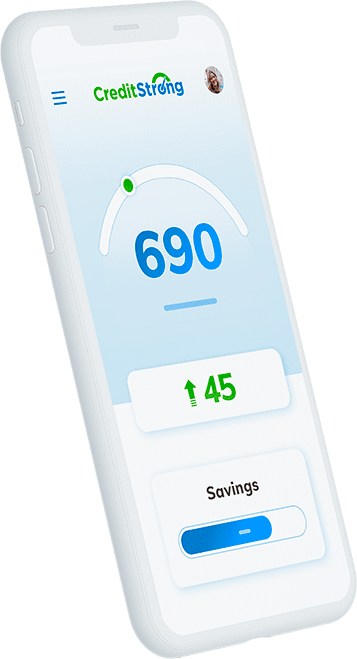What Is a Revolving Line of Credit?

Build strong business credit
with your EIN
There are countless credit account types on the market today. While none of them can solve your every financing need, a revolving line of credit can come pretty close.
They’re among the most flexible type of funding for businesses and individuals alike. Here’s what you should know about them, including what they are, how the different variations work, and how they affect your credit.
What Is a Revolving Line of Credit?
A revolving line of credit is a type of account that lets you borrow funds up to an assigned limit, pay off the balance, and then borrow up to the account’s limit again.
Generally, you can leave the balance outstanding as long as you make minimum payments, though some accounts require periodic renewal.
For example, you might receive a revolving line of credit with a borrowing limit of $10,000. It would be available whenever you wanted to use it, and there would be no interest or payments until you withdrew from the account.
Say you use the line of credit to buy $10,000 worth of supplies for your business after having the line for a few months. Only then would your lender start to charge you interest on the $10,000 balance.
You’d have to make a minimum monthly payment, but there would likely be no final due date where you’d have to pay the balance off entirely. In the meantime, it would simply continue to accrue interest.
Once you paid off the principal and any interest charges, you could reuse the $10,000 to finance another purchase, and the process would repeat itself.
Revolving Line of Credit Examples
There are many different types of revolving lines of credit, and though they share a fundamental structure, there are some significant differences between them.
Credit cards are by far the most common example. You can get a business credit card or a personal one, and they come in secured and unsecured credit lines.
They generally have a grace period of about 25 days during which interest doesn’t accrue on outstanding balances.
If you carry a balance long enough for the lender to charge you interest, it gets expensive quickly. Credit cards have an average interest rate of 20.35%.
The second most popular revolving credit line is the home equity line of credit (HELOC). HELOCs use the equity you own in real estate as collateral. If you default, your lender could foreclose on your property.
HELOCs usually have a lower interest rate than credit cards, averaging around 8.73%, but they don’t have a grace period. As soon as you take a cash advance from the account, interest begins to accrue.
These are the most popular types of revolving lines of credit, but they’re not the only ones. You may also qualify for a business or personal line of credit.
These function similarly to a HELOC, but they may or may not require collateral. If they do, it won’t be the equity in your home. As a result, they usually have higher interest rates than HELOCs.
Revolving Line of Credit vs. Line of Credit
A revolving line of credit includes any account that lets you borrow against a credit limit, pay off the balance, then repeat the process at will. Because you can also wait to draw against the funds as long as you like, they’re a supremely flexible type of credit.
A non-revolving line of credit can take multiple forms, but you can only ever use the funds once. It usually has to be when you first receive approval for the account.
Once you pay the balance back, your lender closes the account. To get further financing, you’d have to apply again.
The typical example of a non-revolving line of credit is an installment loan, such as student loans or an auto loan. They pay out their principal balance in a lump sum upfront.
You can use the funds to finance a purchase, and then you have to pay back the balance, plus interest in regular intervals over a fixed repayment term.
Non-revolving credit usually has a date where your balance comes due in full. Revolving lines of credit may not, but they often have high enough interest rates that you should pay off your balance quickly anyway.
How They Affect Your Personal Credit
Revolving lines of credit play a significant role in building your personal credit. In fact, whether you have them at all affects your score.
Your credit mix is worth 15% of your personal credit score under the FICO model, and a big part of that factor is having installment debts and revolving lines of credit. If you’ve only ever had a term loan, getting a credit card will benefit your score.
In addition, like any credit account, your monthly payments toward revolving lines of credit establish your payment history. It’s worth 35% of your FICO score, so paying on time and in full is essential to building good credit.
Finally, personal credit scoring models consider your total revolving debt balances and the percentage of your available credit that those balances represent. These factors are worth 30% of your FICO score.
The latter is called your credit utilization ratio. For example, say you have two revolving lines of credit. They have borrowing limits of $10,000 and $5,000.
If you have a balance of $5,000 on the first account and $3,000 on the second, their respective credit utilization ratios would be 50% and 60%. Your total credit utilization would be 53%.
It’s best to keep your utilization as low as possible. 30% should be your absolute maximum, and staying below 10% is best.
How They Affect Your Business Credit
There are more relevant business credit scores than relevant personal credit scores, and each one’s calculation relies on a unique combination of factors.
As a result, the impact revolving lines of credit have on your business credit depends significantly on which score you’re discussing.
Some business credit scores don’t include financial tradelines in their calculations, while some focus on them entirely. Others consider them in combination with vendor tradelines.
Financial tradelines are business financing accounts from a lender, like a business loan or revolving line of credit.
Vendor tradelines are lines of credit from the people you do business with, such as a supplier that offers you net-30 terms.
Among the credit bureaus whose scores consider financial tradelines, using revolving lines of credit to build business credit is a lot like doing so with your personal credit.
Establishing an extensive credit history between several accounts, keeping your balances at reasonable levels, and making your payments on time help you develop a good credit score.
Conclusion
Revolving lines of credit are among the most flexible financing types for businesses and individuals.
You can keep them in reserve to draw on them only when you need them, then repay your balances at a pace that’s more relaxed than most forms of installment credit.
Best of all, once you’ve paid them off, you can repeat the process without having to go through another round of credit applications.
Whether you’re a business owner who needs working capital to cover dips in cash flow or an individual looking to earn rewards for paying monthly bills, there’s a revolving credit account out there to suit your needs.
CreditStrong for Business is the only 0% interest business credit builder in the nation
